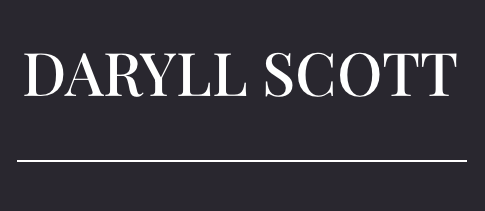
Articles about Thinking, Leadership, Coaching & Change

Over the past two decades of coaching and consulting, a recurring theme has been the effectiveness of conversations that involve feedback or relate to performance.
I think that there are a couple of reasons that this never really leaves the development agenda:
1. Some things change:The way we lead organisations, what we ask people to pay attention to, ways of working, the nature of the job role, and the measures of success. What was considered a great contribution twenty years ago may not cut the mustard today. As what’s required changes, so does the way we discuss it.
2. Some things never change:The ability to lead effective conversations about performance is the most advanced of communication skills. It’s a difficult activity because we are bumping up against human nature. None of us really enjoy being measured, compared, evaluated or critiqued. Just one badly positioned word or statement could easily disrupt the conversation dynamic and provoke defensiveness or resistance.
I have worked on this topic in a wide range of organisations, from SMEs to some of the UK’s biggest brands, so I thought it would be a good idea to share my experience in this blog:
Do you need a process?
Sometimes, the rigid process for feedback and appraisal can be limiting, but it would seem that there is a need for it. I remember working with a large bank that unfortunately blew up shortly after the financial crisis of 2008, (which was a shame because they were a great client and had a good culture). They discovered that the process they were using to facilitate conversations about performance was limiting the quality of the conversations; Following the prescriptive tick boxes was making interactions stilted, robotic and un-empathetic.
They decided to abandon the process altogether and instead encouraged people leaders just to have honest and positive conversations more naturally. Brilliant idea in principle, but the reality was that people stopped having conversations. Without the prompt of a process and the inflexibility of deadlines, conversations don’t happen at all.
The process may be robotic, but it serves as a ‘crutch’ to help people leaders approach and structure the conversation. Without it, approaching the conversation effectively is entirely dependent upon the communication skills of the people leader.
Receptive Mindset
Of all of the factors that affect our ability to take on board feedback, the one that has the most impact is the quality of our relationship with the person giving it.
If we know somebody is on our side or has our back, it’s far easier to engage in the process without feeling defensive. For example, which would you rather receive, challenging feedback from someone that you trust has your best interests at heart or complimentary feedback from someone you distrust?
For most of us, it is the level of trust and the ability to be open that allows us to drop the defences and fully engage.
Defending yourself against feedback of any nature is a massive waste of time. It changes nothing and deprives you of the opportunity to learn and grow. If you successfully defend your limitations, the prize is that you get to keep them! An elite performer would not defend themselves against feedback from their coach.
As a manager or leader of people, our ability to create authentic working relationships so that individuals are receptive to feedback is what makes growth and development possible.
Question Expectations
A self-fulfilling prophecy is a socio-psychological phenomenon of making a prediction that causes itself to become true due to positive reinforcement. We believe that something will happen, and our behaviour changes to fulfil the belief.
If you give feedback to someone and you are thinking, “This will be difficult.” That expectation will be awkwardly visible in your behaviour. If you have negative expectations about the feedback you are receiving, you will not be able to properly hear what is being said.
The route out of this drama is to frame conversations by beginning them by being extremely clear and overt about the positive intentions of the conversation. In doing so, you achieve three things:
1. Managing expectation
In so many activities, we just begin and hope that we communicate clearly enough for people to work out where we are coming from and where we are going. Why leave it to chance? Clear framing in advance allows you to have a conversation about the conversation that will follow. It establishes relevancy, creates an opportunity to agree on how to proceed together, and can even be used to introduce the elephant in the room if needs be.
2. Priming attention
Setting clear positive intentions for the conversation means that is what we will expect and look for evidence of. It creates a helpful confirmation bias or a positive self-fulfilling prophecy. We have much more chance of facilitating a conversation to growth and development outcomes if we have signposted that’s where we are going from the start.
3. Separating intention from the message
Without taking the time to fame the intent of the conversation, the recipient of the feedback may ‘shoot the messenger’. To avoid this you must separate your role in the conversation from the explicit points covered within it. It must be clear that your intention in delivering and exploring the message is positive, even if the message itself is challenging.
Feedback is Subjective
One of the dangers of well-documented feedback processes is that we can fall into the trap of thinking that the feedback is factual.
For the most part, feedback is a generalised conclusion. It tells us about people’s perceptions and the results of our actions. It doesn’t tell us about the complex priorities, circumstances and choices that add up to those results. To get the value out of feedback, we must dig a little deeper. If it’s an outcome, how did it happen? If it’s an output, what did you do?
For feedback to be truly helpful, whether it’s positive or negative, we must explore the reality of what specifically contributed to the feedback.
When faced with challenging feedback, the most unhelpful responses are to either take it on as an absolute truth or reject it completely. Both are overreactions that prevent you from properly exploring it.
The most helpful way to attribute meaning to feedback that you receive is to consider it to be 50% true. By thinking of it as a partial truth, there is no need to defend yourself against it or take it onboard universally.
Focus on the future
All too often, performance conversations are an autopsy of the past in order to justify a number or to have something concrete to talk about.
The consequence is that a great deal of the conversation is retrospective, leaving little time and attention for exploring the future.
Reflecting on and learning from the past is an essential part of self-development, but for managing performance, it’s less important than what you will do next. The past has happened. Whatever lessons we learn from the past, we must put into the future to make a difference.
If you don’t know exactly what you will do differently tomorrow, then the feedback is being used for justification, not for development.
Behaviour is easy to change, but intention is stickier
Most people think of behaviour change as something that’s quite tricky to achieve, but it’s really easy.
It’s not behaviour that people hold on to, it’s how the behaviour serves them.
Any given behaviour is driven by an intention, and that intention is really important to them. That’s why it’s almost impossible to stop a behaviour, but easy to replace it.
In exploring how to behave differently, we must work with our intrinsic motivations.
To do this, question the intent or motive that is driving the current behaviour, then explore different behaviours that will serve the intent/motive in a more healthy, harmonious or effective way.
You cannot stop or change behaviour, but you can shift and replace it.
Free Book
In 2009, I co-authored a book called “Feedback or Criticism?” which provides a method for having brilliant conversations about performance.
Please DM me for a complimentary copy.

Is it possible to pre-design and manage change?
If we do, is it really change, or is it just the functional implementation of something we have already decided, based on what we already have?
Is designed change a bit like planned spontaneity?
For change to become truly integrated, it needs to emerge and evolve. Pre-designing exactly what things will be like after change is like trying to pre-determine the weather for next week.
When the burning platform for change is something negative that we are attempting to overcome, we simplistically fall into immediate solution thinking: The suggested solution is simply the exact opposite of the problem, which does nothing to understand or recognise why the problem is happening in the first place.

As we move to design new ways of working in a post-pandemic, video call-enabled world, we are fighting against a fundamental personality difference, and it’s not the most obvious one.
Tendencies toward introversion and extroversion create preferences for interpersonal contact, with more extroverted people needing to think out loud and more introverted types needing more reflective time, but hybrid working can clearly work for both. As we approach the challenges of hybrid working, our differences in extraversion and introversion are not what causes the most difficulty. There is another overlooked difference that creates much more trouble.
Firstly, let’s consider the question of whether we should come into the office at all.
We could argue that working remotely is the future. It provides freedom and mobility, and it’s better for the planet. Some businesses benefitted hugely from the enforced conditions of lockdown, they filled up their piggy banks with maximum billings as they churned through tasks with minimum costs. For such businesses, there is an extremely strong argument for remote working from the perspective of effectiveness, lifestyle and environment.
We could also argue that chopping up work interactions into one-hour chunks is an inorganic way of managing time. It deprives us of the unplanned, informal, off-topic conversations that lead to vital awarenesses and discoveries, and the quality of interaction is slightly impoverished through video interactions. It may be more efficient for functional work, but connection, rapport, camaraderie, culture and teamwork are harder to achieve. The cost of missing out on these vital human aspects of work is felt longer term as the bonds between us weaken.
When you consider both of these realities, hybrid is clearly the answer, but how?
Here’s the double bind:
- If you leave it for people to make their own decisions, some will demand more clarity, and some will take the opportunity to never show up in person.
- If you create a clear policy, that policy will be unpopular. There is simply no one-size-fits-all solution.
As soon as you make a suggestion one way or another, you will bump into well-rehearsed ‘scripts’ about what works for people and what they need.
So, if designing a solution and imposing it will please very few people, what is the answer?
Before we get to that, notice that the problem here is not so much hybrid working, but imposing an approach to it. The conflict is with the imposition of policy. Let’s consider the typically unrecognised personality difference that creates this difficulty:
Some people are a little more left-brained, and others are a little more right-brained in their approaches.* Most learning models recognise this difference:
- Left-brained thinking asks ‘why?’ or ‘what?’, favouring static, explicit or factual information, for theorising or reflecting to know something.
- Right-brained thinking asks ‘how?’ or ‘what if?’ questions, favouring dynamic, process, and dependant information, so they can actively or pragmatically do something.
This difference in processing style can be seen in ways of working, leadership style, and attitude toward hybrid working policies. Individuals with these extremes of difference in personality do not see the wisdom or benefit in each other’s approach.

As professional coaches, we spend much time debating ethical quandaries like the blurry boundary between coaching and therapy and broader contextual or systemic factors beyond the one-to-one coaching relationship.
Whilst wrestling with ethical questions one-by-one provides valuable experience and gives you plenty of fodder for reflection and supervision conversations, do they lead to useful decision-making principles, more congruent values or a clearer moral compass?
We can debate ethics all day long, but what do we learn about the principles that guide us? I rarely fall into ethical quandaries regarding coaching because I have a very clear set of deal breakers shaped by 20 years of experience.
I would like to share three of them with you, but I would also like to be clear that I am not suggesting you adopt them. These principles work for me, but I regularly turn away business and say no to people who need help if the conditions are not right. You may have different ethics and values, these are merely offered to enrich the debate:

Culture may indeed eat strategy for breakfast, and if we are not careful, it can eat people for breakfast too!
As Sun Tzu wrote, "Even the finest sword plunged into salt water will rust."
Most leaders recognise the importance of culture.
An individual who is inspired is 125% more productive than one who is merely satisfied. Can you think of any other variable that can more than double performance?
Mismatch in culture is the most common reason why most mergers and acquisitions fail to live up to their expectations. Some studies suggest that as many as 90% of mergers fail.
One of the challenges that people concerned with culture in most organisations face is that culture needs to be communicated, but when we define it, we make it a static thing rather than seeing it as systemic and dynamic.
A culture is a living system, and it’s communicated through everyday micro behaviours: What is tolerated, prioritised, recognised, ignored, encouraged, discouraged, laughed at etc.
Leaders think of culture top-down, but culture happens bottom-up ( see blog on top-down or bottom-up thinking ).
What happens when we think of culture not as a static quality but rather as a live, changing context?
Whether we are leading through a merger or coaching for performance, we need to hold a space for people to work through differences and keep them glued together enough for the process to remain functional.
In my opinion, Schismogenesis is the most interesting concept to consider. Coined by Gregory Bateson from ‘schism’ meaning division, and ‘genesis’ meaning a process of origin, it describes the process of how things come together and break apart and highlights the fundamentals of division that occur between individuals or groups.
Bateson suggested that schismogenesis can occur in two different forms: complementary and symmetrical:
Complementary Schismogenesis happens when the behaviour of one person or group elicits a contrasting response from another person or group. The differences polarise, leading to an escalating cycle of opposing behaviours.
The best illustration of this I have come across is the Framework of Organisational Tensions by Robert Quinn. It so clearly illustrates how some positive actions are in opposition to other equally positive actions. That difference can create tensions that escalate actions into the negative zone when they are more extreme and less helpful.

Organisational performance is most affected by culture, and culture is most influenced by leadership behaviour. According to HBR
, an inspired employee is two and a quarter times more effective than one who is merely satisfied. Can you think of any other variable in business that will make a 225% difference? Therefore, developing leaders to create a compelling culture and inspire the people is likely to give you the most bang for your buck.
Simple so far. Now we come to the trickier questions; what is leadership, and what abilities need to be developed?
Most leadership theories focus on either the traits of the leader (like autocratic, democratic, bureaucratic or charismatic) or focus on ways in which the leader exerts their power and influence (like situational, transactional or transformational). The well-rounded leader needs the awareness and flexibility to shift between these different styles, and when they do, the lines between these categories begin to blur.
For example, leaders are required to:
- Make themselves visible but also not hog the limelight
- Be clear and decisive but also be open-minded and curious
- Prevent failure but also take risks
- Set clear outcomes but also be open to change
- Plan actions in advance but also be agile and responsive
- Get clarity and be data-led but also act decisively when things are ambiguous
- Make things simple but also remain aware of the complexity and nuances
- Understand individual circumstances but also act for the good of the collective
- Drive high performance but also prevent churn or burnout
Leadership is not a job title, it's a way of being.
Subscribe to receive email updates about current thinking and new events
Thank you for subscribing. You will receive updates about writing projects and events.
Well this is embarrasing, we seem to be having a tech issue. You can email me directly using the icon in the header.


